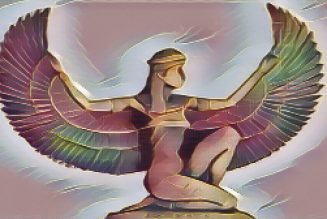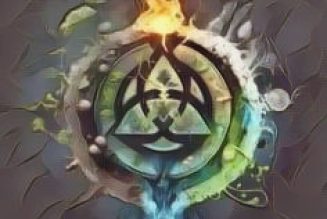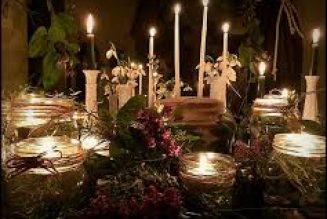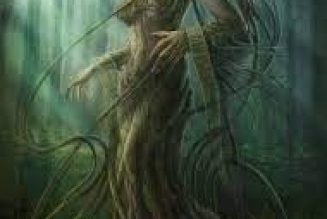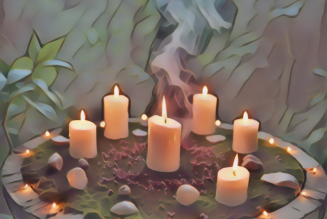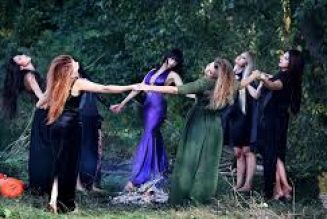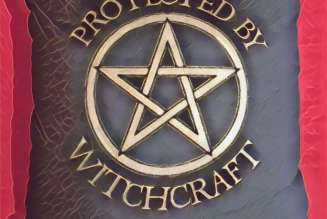The ability of witches, sorcerers and other magically empowered persons to transform themselves and other humans at will into animals, birds and insects. In witchcraft trials, people testified that the accused witches had appeared before them or tormented them in some nonhuman shape. For example, in 1663 Jane Milburne of Newcastle, England, did not invite Dorothy Strangers to her wedding supper. Consequently, Milburne alleged, Strangers transformed herself into a cat and appeared with several other mysterious cats to plague Milburne. In another English witchcraft case in 1649, John Palmer of St. Albans confessed that he had metamorphosed into a toad in order to torment a young man with whom he had had a quarrel. As a toad, Palmer waited for the man in a road. The man kicked the toad. After he returned to the shape of a man, Palmer then complained about a sore shin and bewitched his victim. In areas where witchcraft fears ran high, the sight of nearly any hare or stray dog caused great concern. Witches were said to transform themselves as they rose up their chimneys on poles and broomsticks to fly off to sabbats. The most common forms were he-goat, wolf, cat, dog, cow, hare, owl and bat. Some witches believed that they had done this, perhaps as the result of the hallucinogenic ingredients in some of the ointments they rubbed on themselves. In 1562 alchemist Giovanni Batista Porta, in his book, Natural Magick, told of how hallucinogenic potions caused two men to believe they had metamorphosed into a fish and a goose, respectively: the man would seem sometimes to be changed into a fish; and flinging out his arms, would swim on the Ground; sometimes he would seem to skip up, and then dive down again. Another would believe himself turned into a Goose, and would eat Grass, and beat the Ground with his Teeth, like a Goose: now and then sing, and endeavor to clap his Wings. Isobel Gowdie, a Scottish woman who voluntarily confessed to witchcraft in 1662, said she and her sister witches used incantations to transform themselves into hares, cats, crows and other animals. Sometimes they were bitten by hunting dogs. Witches were said to use metamorphosis to gain easy entry into a household, in order to cast an evil spell upon an unsuspecting person. An insect crawling on the floor, or a mouse skittering through the door, might be suspect. Witches also allegedly transformed themselves in order to escape captors. According to one story, a husband tried to prevent his witch wife from attending a sabbat and tied her to the bed with ropes. She changed into a bat and flew off. Another story tells of a witch brought before inquisitors in Navarre in 1547, who was able to smuggle along her magic ointment. She rubbed herself down and turned into a screech owl, escaping certain death. To torment or punish other humans, witches and sorcerers turned them into beasts. In Greek myth, the sorceress Circe turned Ulysses’ men into swine. In folktales, wicked sorcerers and witches turned people into frogs or other creatures, who had to wait for the right person to come along and break the evil spell. One of the most feared metamorphoses was that of wolf. Man-eating wolves who terrorized villages were sometimes said to be witches. The man-wolf condition known as lycanthropy, however, is not the same as metamorphosis, since it is involuntary. According to one 17th-century French tale, a hunter was attacked in the woods by an enormous wolf and was able to cut off one of its paws. Howling, the wolf fled. The hunter took the paw to show to a friend. When he took it from his pocket, he was astonished to see that it had changed into a woman’s hand with a ring on one finger, which he recognized as belonging to his wife. He sent for his wife, who was missing one hand. She confessed to being a witch and transforming herself into a wolf in order to attend a sabbat. She was burned at the stake. Another version of the same tale has the wife admitting to lycanthropy. In 1573 Gilles Garnier, an accused wizard of Lyons, France, was condemned to be burned alive for turning himself into a wolf and attacking and killing children, whom he devoured. Some demonologists such as Jean Bodin and Joseph Glanvil accepted metamorphosis as fact, but others denounced it as fallacy. The Malleus Maleficarum (1486), the leading inquisitor’s guide, upheld the latter view, citing saints Augustine and Thomas Aquinas as saying that metamorphoses were illusions created by the Devil and demons. Such illusions, said authors Heinrich Kramer and James Sprenger, were the result of God punishing some nation for sin. They pointed to verses from the Bible: Leviticus 26, “If ye do not my commandments, I will send the beasts of the field against you, who shall consume you and your flocks,” and Deuteronomy 32, “I will also send the teeth of the beasts upon them.” As to man-eating wolves, Kramer and Sprenger said they were true wolves possessed by demons. If a person believed himself to have turned into a wolf, it was the result of a witch’s illusory spell. Increase Mather called metamorphosis “fabulous” and wondered in awe at the stories that were believed. In An Essay for the Recording of Illustrious Providences (1684), Mather says: But it is beyond the power of all the Devils in Hell to cause such a transformation; they can no more do it than they can be Authors of a true Miracle. . . . Though I deny not but that the Devil may so impose upon the imagination of Witches so as to make them believe that they are transmuted into Beasts. Mather recounts a story of a woman who was imprisoned on suspicion of witchcraft and claimed to be able to transform herself into a wolf. The magistrate promised not to have her executed, in case she would turn into a wolf before him. The witch rubbed her head, neck and armpits with an ointment and fell into a deep sleep for three hours. She could not be roused by “noises or blows.” When she awakened, she claimed that she had turned into a wolf, gone a few miles away and killed a sheep and a cow. The magistrate investigated and discovered that a sheep and cow in the location described by the witch had indeed been killed. It was evident that the Devil “did that mischief” and that the witch had merely experienced the dreams and delusions created by Satan. In shamanism, shamans metamorphose (shape-shift) into their guardian animal spirits or power animals (animals from whom they derive their chief power). The shapeshifting is done in an altered state of consciousness.
Metamorphosis
732 views



























